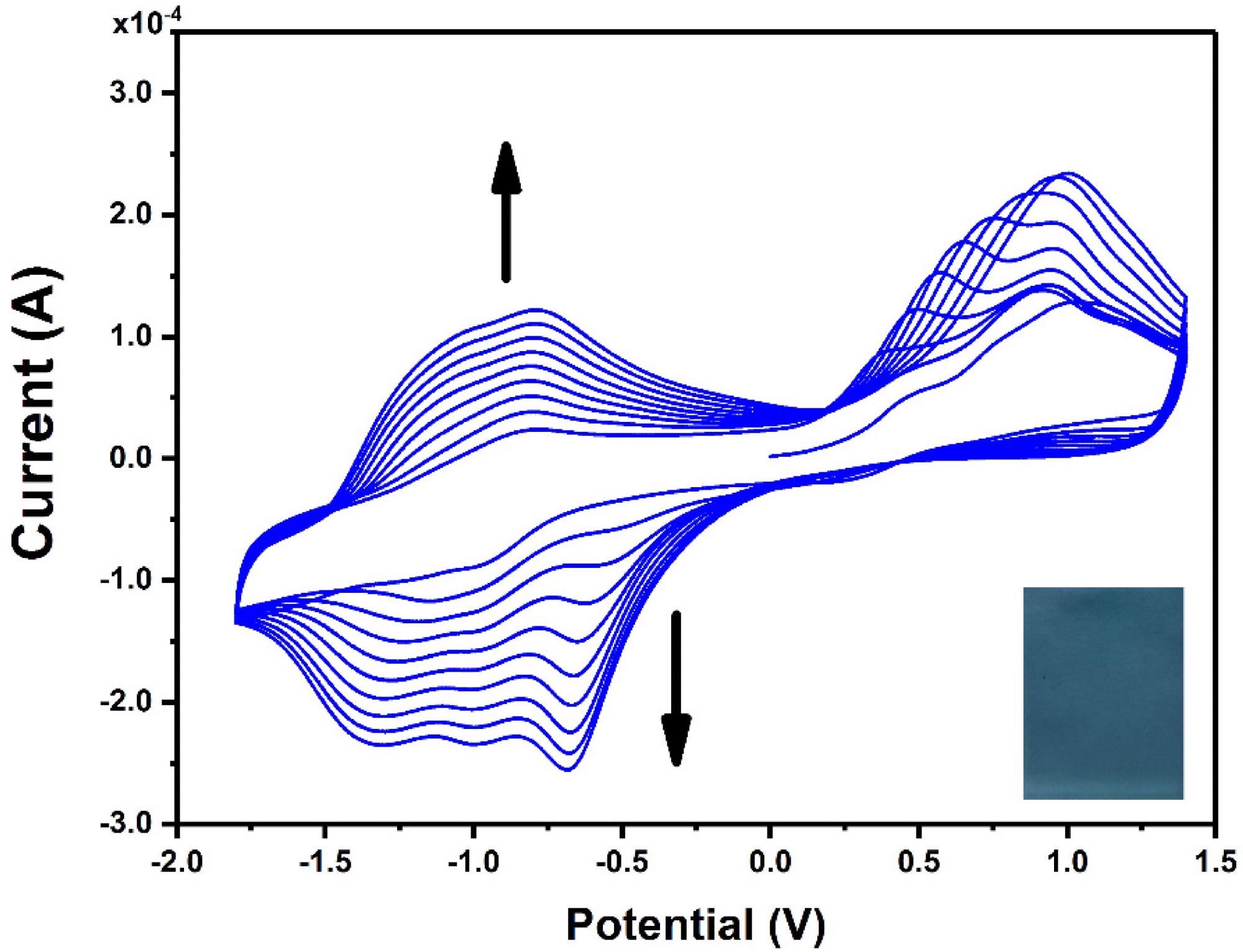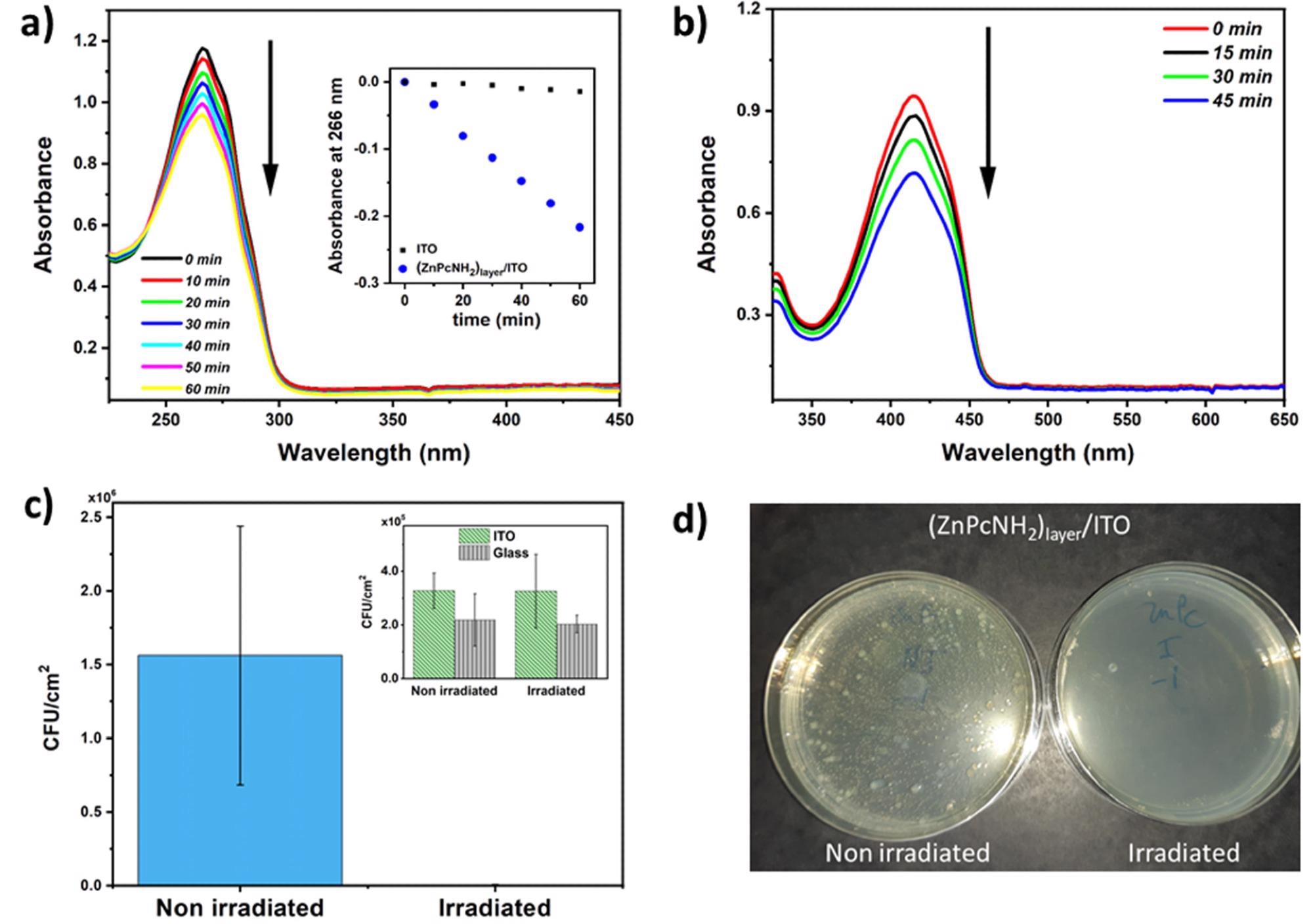A team of researchers recently published a paper in the journal Materials that demonstrated the antimicrobial properties of a photoactive biocidal organic layer of zinc against Staphylococcus aureus (S. aureus).

Study: Electrochemically Deposited Zinc (Tetraamino) phthalocyanine as a Light-activated Antimicrobial Coating Effective against S. aureus. Image Credit: Kolomiiets Iryna/Shutterstock.com
Background
Inorganic and/or organic photosensitizers have gained considerable prominence as antimicrobial coatings in recent years owing to their exceptional biocidal efficiency against fungi, viruses, and bacteria. Thus, photosensitizers are increasingly considered as a suitable alternative to traditional antimicrobial coatings containing fluorinated polymers and other components.
In photosensitizers, the antimicrobial action of photoactive layers depends on the formation of reactive oxygen species (ROS) such as singlet oxygen, peroxides, and superoxides that act in a non-selective and highly effective manner against all microorganisms. However, the practical application of photoactive layers is limited owing to certain major constraints related to the accessibility and ease of the deposition procedure, long-term action, or photostability. In order to address these issues, phthalocyanines (Pcs) were considered as a potential solution owing to their effectiveness as photosensitizers and photoinitiating systems.

CV curves recorded for the ITO working electrode in 0.1 mM ZnPcNH2 electrolyte solution (0.1 M TBABF4/DMF). Inset: photography of (ZnPcNH2)layer electrodeposited on ITO. Image Credit: Gusev, I et al., Materials
In this study, researchers investigated the effectiveness of using an electrodeposited Pc-based photoactive layer as a light-activated antimicrobial coating. They selected zinc (tetraamino) phthalocyanine (ZnPcNH2) as the primary photosensitizer molecule as Pcs- containing Zn displays significant anti-microbial properties and a considerable efficiency in the production of ROS. The antimicrobial properties of the layer were tested against S. aureus.
The Study
Dimethylformamide (DMF) containing tetrabutylammonium tetrafluoroborate (TBABF4) was utilized as an electrolyte solution to achieve the electrochemical deposition of (ZnPcNH2) layer, while indium tin oxide/borosilicate glass (ITO) was employed as support. α-Terpinene-acetonitrile system or 1,3-diphenylisobenzofuran (DPBF)-methanol system was used to investigate the ROS photogeneration.
(ZnPcNH2) layer was formed on a platinum (Pt) plate or ITO from 0.1 mM ZnPcNH2 solution in 0.1 M TBABF4/DMF. An ultrasonic mixer was used to mix the starting solution, and oxygen from the solution was removed using argon for 15 minutes. The electrochemical deposition was performed using a CHI 660C electrochemical workstation and a cyclic voltammetry (CV) technique.

(a) SEM and (b,c) AFM images of (ZnPcNH2)layer electrodeposited on ITO. Image Credit: Gusev, I et al., Materials
A three-electrode setup comprising glassy carbon (GC) as counter electrode, silver (Ag) wire as a pseudo-reference electrode, and Pt or ITO as a working electrode was utilized for the electrochemical deposition process. Atomic force microscopy (AFM) and scanning electron microscopy (SEM) was used to investigate the morphology of the photoactive layer.
A Phenom ProX with a magnification between 15,000× and 20,000× and an accelerating voltage equal to 15 kV was employed to obtain the SEM images, while the Nanosurf CoreAFM working with standard contact-mode AFM HQ: CSC17/Al BS probe was used to perform the AFM investigations. A Hewlett Packard 8452A UV–Vis spectrometer was utilized to obtain the ultraviolet-visible (UV-Vis) spectra of the (ZnPcNH2) layer on the ITO and ZnPcNH2 solution in DMF.
The infrared (IR) spectra of the (ZnPcNH2) layer and ZnPcNH2 powder deposited on the platinum plate were acquired using the Perkin Elmer Spectrum Two IR spectrometer. The IR spectra were acquired in attenuated total reflectance (ATR) mode in the 3500–700 cm-1 range. White light illumination or a 638 nm diode laser was utilized to study the process of ROS photogeneration. Finally, the antimicrobial properties of the ZnPcNH2-derived ITO surfaces, glass, and coatings were investigated against S. aureus ATCC12000.
Observations
Irreversible oxidation was observed at 0.75 V of the working electrode as the primary amino group of ZnPcNH2 oxidized to a radical cation. A steady rise in the registered current was noted during continuous scanning in the broad potential range, indicating the formation of an electroactive layer on the ITO electrode surface, and a uniform blue-green (ZnPcNH2) layer was formed on the ITO surface after 10 cycles of the electrodeposition process.
The SEM image of ZnPcNH2 covered ITO surface showed spherical crystallites sized within the range of 0.6–1.3 µm. Observations from the AFM studies indicated continuous ZnPcNH2 coverage of the ITO surface and the presence of vertically oriented crystallites. From the IR and UV-Vis spectroscopies, the Q (π → π* transition band) and B (Soret) bands for ZnPcNH2, both in the solution phase and in the form of a layer, were observed at 720 nm and 350 nm, respectively.

(a) UV–Vis spectra of α-terpinene (ACN solution) recorded during illumination of (ZnPcNH2)layer; inset: a drop in absorbance at 266 nm during illumination of unmodified ITO and (ZnPcNH2)layer/ITO. (b) UV–Vis spectra of DPBF (methanol solution) recorded during illumination of (ZnPcNH2)layer. (c) Evolution of colony-forming units, CFU/cm2 (for S. aureus), at the surface of the non-irradiated and irradiated (ZnPcNH2)layer/ITO; inset: ITO and glass, p < 0.001, n = 4. (d) Optical images of S. aureus colonies on Petri dish after 48 h of incubation at 37 °C that adhered to the (ZnPcNH2)layer/ITO surface with and without irradiation. Image Credit: Gusev, I et al., Materials
Additionally, the deposited Pc layer demonstrated broad and strong absorption in the visible range, which is beneficial for a photosensitization process driven by white light. The ATR-IR spectra of the (ZnPcNH2) layer and ZnPcNH2 powder revealed that above 3000 cm-1, a difference was observed between the spectra of the layer and the monomer due to the stretching vibrations of amino groups, indicating the role of amino acids in the electrodeposition of the layer.
The ROS photogeneration by the (ZnPcNH2) layer was confirmed by the clear decline in the absorbance of a 638 nm diode laser at 410 nm due to the reaction of generated ROS with DPBF. The inhibition to S. aureus adhesion on the ZnPc containing coating reached 99.8% under light, indicating the production of ROS under illumination.
To summarize, this study demonstrated that an electrochemically deposited ZnPcNH2 photosensitizer can act as an effective light-activated antimicrobial layer. Moreover, the coating can also be used to cover different semi-conductive materials of all shapes and sizes, as the coating was performed in an oxygen-free organic environment.
Disclaimer: The views expressed here are those of the author expressed in their private capacity and do not necessarily represent the views of AZoM.com Limited T/A AZoNetwork the owner and operator of this website. This disclaimer forms part of the Terms and conditions of use of this website.
Source:
Gusev, I., Ferreira, M., Versace, D.-L. et al. Electrochemically Deposited Zinc (Tetraamino) phthalocyanine as a Light-activated Antimicrobial Coating Effective against S. aureus. Materials 2022, 15, 975. https://www.mdpi.com/1996-1944/15/3/975/htm